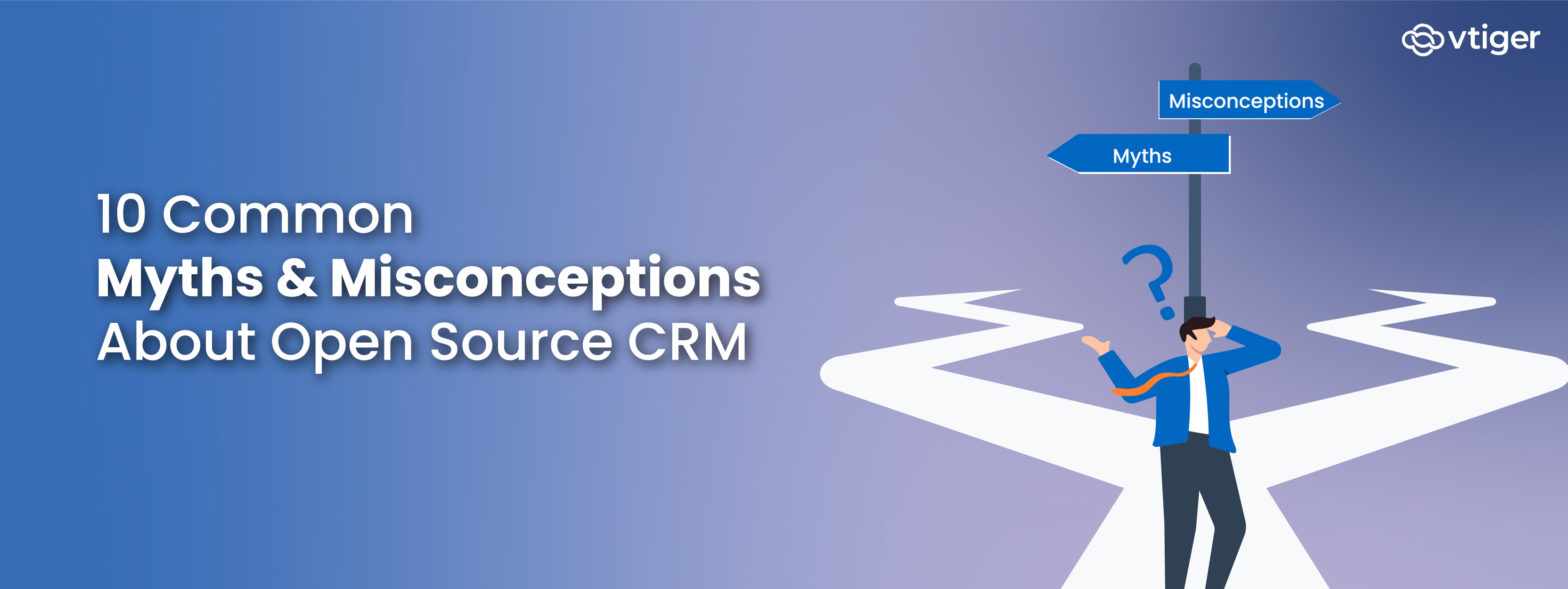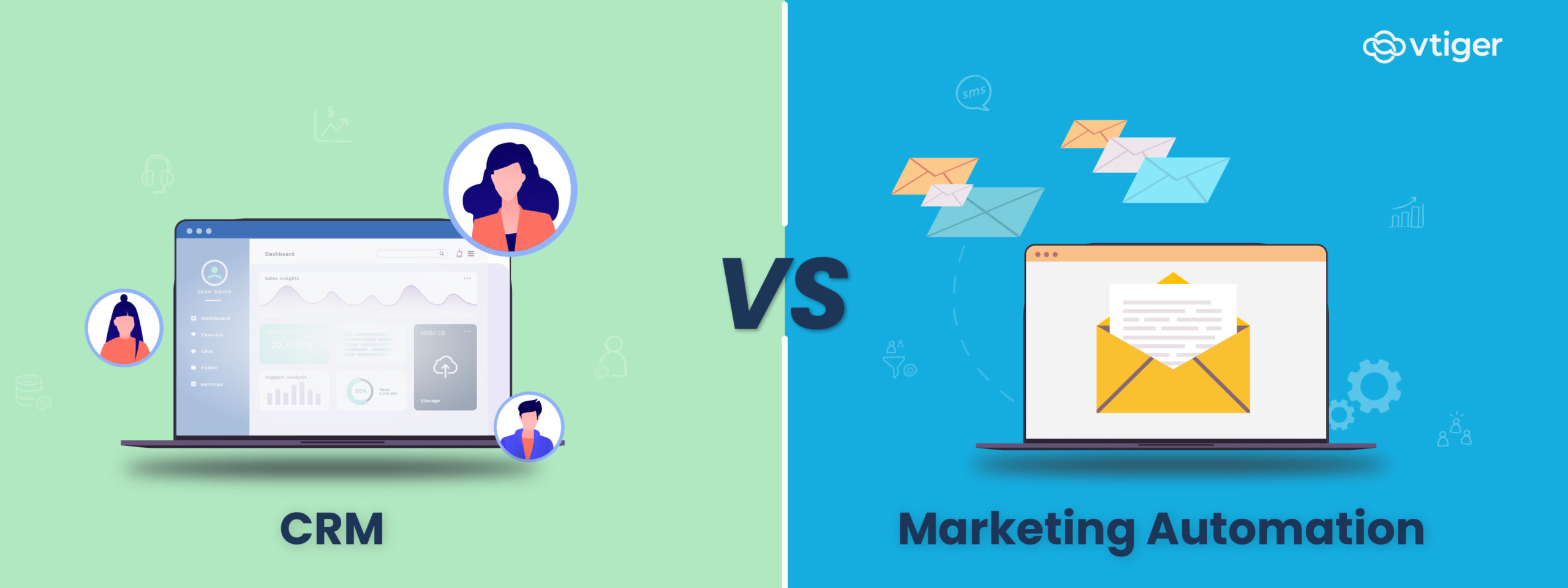Customer Relationship Management systems are often misunderstood, despite the clear ROI and operational value of CRM platforms. Because of this, many businesses still hesitate to adopt them and are unable to perform to their true potential.
A recent study by Forbes reveals that 30% of small businesses still operate without a CRM, leading to missed revenue opportunities and poor customer follow-ups.
These numbers show how CRM systems play a crucial role in market survival and scalability. However, many businesses avoid adoption due to outdated beliefs and false assumptions. This blog aims to debunk the CRM myths that are holding businesses back from reaching new levels of success.
What is a CRM?
Customer Relationship Management (CRM) is both a strategy and a solution designed to improve profitability by deepening customer connections. It empowers businesses to manage leads, track deals, provide consistent support, and run personalized campaigns. CRM enables teams to interact with prospects and customers across multiple channels, fostering long-term loyalty and satisfaction.
In essence, CRM software supports these strategies with integrated functionalities for marketing, sales, support, and digital commerce operations.
10 Biggest Myths and Misconceptions About CRM
CRM systems have evolved far beyond basic contact storage, but the myths haven’t caught up. From being labeled as ‘too complex’ to ‘only for sales’, these misconceptions quietly influence decisions, slow adoption, and limit impact. It’s time to clear the air and confront the most common CRM myths businesses still believe in 2025.
1. CRM is only for large enterprises:
This assumption often comes from how CRMs were initially positioned as enterprise-grade tools with steep learning curves. But that’s no longer the case. Modern CRM solutions are built with flexibility at their core, allowing small and mid-sized businesses to start small and expand functionality over time. Whether you’re a five-person startup or a mid-size institution, CRM acts less like a corporate luxury and more like a performance enabler.
Today’s systems allow phased rollouts, beginning with sales automation, then extending into lead nurturing, finance sync, and team collaboration. The implementation pace depends not on company size, but on operational needs and digital readiness.
2. CRM is just a software:
If CRM were only a tool, 60% of global businesses wouldn’t consider it more critical today than they did five years ago. And organizations wouldn’t be reporting a 45% jump in customer satisfaction and a 32% lift in employee engagement simply by installing software. The truth is, CRM has become a digital workspace that allows businesses to engage, sell, retain, and scale through a single platform.
CRM introduces structure into how customer relationships are handled, but more importantly, it embeds customer-centric thinking into everyday decisions. It fuels cross-functional collaboration, turns fragmented communication into unified messaging, and brings clarity to an otherwise reactive customer lifecycle.
3. CRM is too expensive:
Yes, CRM involves investment, but so does every other business growth initiative. The misconception about high cost typically arises when businesses fail to evaluate CRM’s long-term return. From reducing manual work to shortening sales cycles and increasing retention, CRM delivers measurable benefits.
Many cloud-based CRMs today operate on scalable, subscription-based pricing. You can choose a plan that matches your budget and expand as your needs grow. Also, when implemented with clear scope and training, the chances of scope creep and unforeseen costs are minimal. The bigger question isn’t “Is CRM expensive?” but rather “Can you afford the inefficiencies of not using one?”
4. CRM is complicated and requires extensive training:
The idea that CRM systems are overly technical or hard to understand is outdated. Today’s CRM interfaces are designed with user experience in mind, like offering guided flows, automation, and user-friendly dashboards. Most modern B2C CRMs require minimal training to get started.
Teams may hesitate due to unfamiliarity, especially if they’re moving from spreadsheets or manual logs. However, this reluctance fades quickly once they experience the platform’s efficiency in managing contacts, tracking activity, and automatically following up on leads. With proper onboarding and support from the provider, adoption becomes less about complexity and more about adapting to smarter processes.
5. CRM is just for sales:
Sales may have been the first department to adopt CRM, but it hasn’t been the only one for a long time. Today, several CRM users are in marketing and in customer support, as CRM’s utility extends far beyond pipeline tracking and deal closures.
It gives marketers a unified view of behavior patterns, helping them create campaigns that actually resonate. It gives support teams access to low-latency customer data, so resolutions are quicker and more personalized.
6. CRM implementation is a one-time project:
CRM is not a plug-and-play system that’s set and forgotten. It evolves with your business. Customer expectations, touchpoints, and preferences can change, and so must your CRM’s configuration and processes.
Implementation should be viewed as an ongoing optimization journey. You may start with contact management and later add workflow automation or analytics. Integrations with other platforms, such as WhatsApp, Teams, and Google Workspace, also require continuous repetition. CRM success is rooted in agility and ongoing alignment with business goals
7. CRM guarantees instant success:
CRM is a powerful enabler, but it won’t solve problems by itself. It gives your teams structure, visibility, and tools to work better. However, you still need consistent effort, goal alignment, and human engagement to drive results.
A CRM won’t do the creative work for your pitch or convert leads on its own. But it will help you know when to pitch, whom to pitch to, and what they care about. It ensures no leads are missed, customer needs are documented, and performance is tracked.
CRM sets the foundation for growth, but it’s your strategy and execution that promise success.
8. All CRMs are the same:
This is one of the most misleading assumptions in CRM buying decisions. CRMs differ not just in features, but in philosophy; some prioritize automation depth, others focus on simplicity; some are vertical-specific, others are horizontal platforms built for scale.
What your business needs from a CRM depends on far more than headcount. It’s about how your teams operate, the complexity of your customer journeys, your integration environment, and what your growth model looks like.
A product-led company might need usage analytics tied into onboarding flows. A service-based firm may value contact segmentation and upsell workflows. Selecting the right CRM will match the tool to your workflow, your motion, and your ability to execute on strategy.
9. Moving data to a new CRM is difficult and time-consuming:
For most businesses today, switching CRMs isn’t nearly as painful as it once was. Yet the fear still lingers, rooted in past migrations that were either poorly planned or heavily manual. But the technology and support ecosystem have evolved. Data migration has become less disruptive, thanks to built-in tools and vendor assistance.
This myth continues because some teams have experienced delays or complications during transitions. Others worry about losing critical records or damaging data integrity. And in many cases, there’s simply a lack of awareness about how much modern CRMs have simplified the process.
Most contemporary platforms offer pre-built migration frameworks, guided onboarding, and phased rollout capabilities. Instead of overwhelming your team with a full system switch, you can begin with priority modules like contact data or lead stages and activate others in sequence. Planning, cleansing old data, and mapping fields beforehand go a long way in reducing complexity.
10. CRM adoption is always smooth and easy:
Most CRM rollouts face resistance not because the platform lacks functionality, but because internal processes are not yet ready to support it. Assuming adoption will happen automatically is one of the most common reasons CRMs underdeliver.
The success of implementation depends on how clearly roles are defined, how consistently training is delivered, and how well the system is integrated into daily routines. Without these elements, even the best CRM will remain underused.
Adoption is not tied to how advanced the software is. It depends on how well the teams understand its purpose, how easily it fits into their workflow, and how effectively change is communicated internally.
Organizations that treat CRM as an operational shift, rather than a software upgrade, are the ones that see sustained usage and measurable impact.
Conclusion
CRM adoption is no longer limited by access or availability, it’s limited by perception. Misconceptions around cost, complexity, and relevance still shape how businesses approach CRM, often leading to underutilization or delayed implementation.
The reality is this: CRM works when it is aligned with real business needs, team structures, and long-term goals. Its effectiveness is not defined by its features alone, but by how it is planned, rolled out, and maintained.
Misunderstanding CRM slows down growth. Understanding it positions your business to move faster, respond better, and serve smarter.
Frequently Asked Questions
1. Is CRM only suitable for large enterprises?
CRM is not limited by team size. Smaller businesses use it to organise contacts, follow up efficiently, and manage pipelines. Scalable options exist, allowing teams with limited staff to improve consistency in handling leads and customer conversations.
2. Is CRM just a software tool?
CRM is not just software; it’s a business-wide framework. The platform supports structured communication, aligned processes, and informed decisions. It works best when adopted as a strategy rather than a standalone tool added to existing systems.
3. Is CRM too expensive for small businesses?
No, CRM doesn’t require a large budget. Many platforms offer starter plans with essential features. These systems often reduce manual work and improve follow-ups, making them cost-effective tools for smaller businesses aiming for sustainable growth.
4. Is CRM difficult to use or manage?
Most CRMs are designed for non-technical users. Interfaces are simple, key actions are intuitive, and onboarding guides are built in. Teams can adapt quickly, especially with available support materials and optional walkthroughs during setup.
5. Is CRM only meant for the sales team?
CRM supports more than just sales. Marketing, support, and operations teams also rely on it for customer insights, campaign tracking, and service coordination. Any team engaging with customers benefits from shared data and unified communication.
6. Is CRM implementation a one-time project?
CRM is not a one-time setup. It needs updates, user feedback, and occasional adjustments to stay relevant. Business goals change, and CRM systems must adapt over time to continue supporting new processes and team structures.
7. Will CRM instantly boost sales and success?
CRM helps structure workflows and improve customer visibility, but results depend on usage. With proper planning, training, and consistent input, outcomes improve over time. Instant results are uncommon, but long-term value is achievable through active use.
8. Are all CRM systems the same?
No, CRM platforms vary in features, usability, and industry focus. Some offer general capabilities, while others are tailored for specific workflows. Choosing the right one depends on your business structure, goals, and how different teams operate.
9. Is migrating data to a new CRM difficult?
Data migration has become more manageable with improved tools. Many platforms include import assistants and guided support. When planned well, most businesses can complete the process without delays, major disruptions, or loss of critical records.
10. Will employees easily adapt to a new CRM?
Some users may adjust faster than others, but structured onboarding helps everyone catch up. When teams receive training, understand the system’s value, and participate in the setup phase, adoption becomes more consistent across departments.



